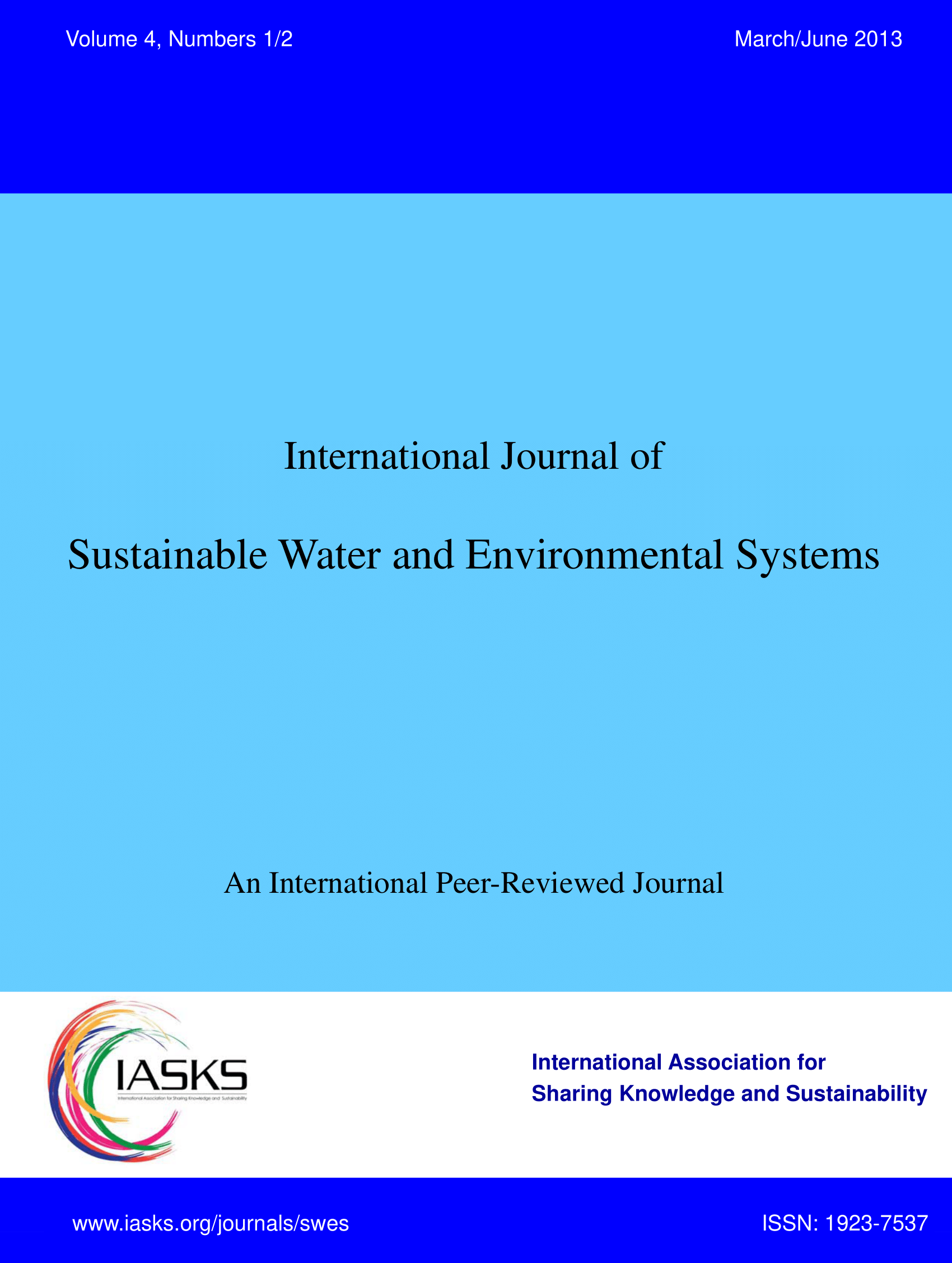volume-06-Issue 2 (2014)
Latest Articles
Numerical Simulation of Direct Contact Membrane Desalination in Conjugate Heat Transfer Configuration: Role of Membrane Conductivity
SWES, volume-06, Issue 2 (2014) , PP 81 - 87
Published: 28 Nov 2014
DOI: 10.5383/swes.06.02.009
by Isam Janajreh, Dana Suwwan from Mechanical Engineering Program, Masdar Institute of Science and Technology, PO Box 54224, Abu Dhabi, UAE
Abstract: The Abstract- Direct Contact Membrane Distillation (DCMD) is modeled using the conjugate heat transfer Navies-stokes flow model. A uniform salty and relatively hot feed and colder fresh permeate flow are driven by the peristaltic pump are considered in parallel configuration across the membrane. Depending on the membrane parameters (permeability, thickness, pour size, and conductivity) the resulted temperature difference leads to a pressure gradient responsible for the vaporizing fraction of the feed and transport to the permeate side through the hydrophobic membrane. Under different flow conditions and membrane conductivity mass flux, heat flux, temperature polarization, and thermal efficiency are evaluated. Results showed a good agreement with the published theoretical work on the mass flow this followed with sensitivity study to two parameters one is operational and the other is designed to gain a better understanding of the system performance and metrics including temperature polarization, convective and conductive heat flux, and associated latent heat of evaporation. read more... read less...
Keywords: Direct Contact Membrane Distillation, Mass Transfer, Heat Transfer, Temperature Polarization
Power Plant Algal Treatment with Focus on the Sonication of Enteromorpha Prolifera Macro Algae
SWES, volume-06, Issue 2 (2014) , PP 61 - 72
Published: 24 Nov 2014
DOI: 10.5383/swes.06.02.0007
by Isam Janajrehcand Dinesh K. Saxena from Mechanical and Materials Engineering Department, Masdar Institute, Abu Dhabi, PO Box 54224, United Arab Emirates Bryology laboratory, Botany Department, Bareilly College, Bareilly-243005 (U.P), INDIA
Abstract: While others considering algae as the “light of hoop” to the energy crisis, and as a carbon neutral technology to combat global warming, uncontrolled growth and its eutrophication can be considered a challenging pollution issue. Nevertheless, in the last a few decades’ algae pollution has become a global issue. The occurrence of algal bloom in water source has posed a serious water safety and unaccounted control and maintenance at substantial added cost. Overgrowing algae have brought negative impacts on power plant and less frequently led to shutdown of the desalination or power plant. The eutrophication which is rarely is eliminated; it could be controlled by mechanical filtration and chemical biocidal methods. This adds another economic burden by the supply of chemical and their neutralizing agent to cope with tight EPA limits. In this work a review of the treatment of algae is carried out which involves chemical, mechanical, electromechanical and as well as the aid of scavengers directly or indirectly and their combination. As plausible results on the sonication treatment have been emerging, recent work of the author was presented as well to show the effectiveness of the sonication technology in the treatment of the Enteromorpha Prolifera Macro Algae. read more... read less...
Keywords: Enteromorpha prolifera, Algal Treatment, Sonication of Algae, Eutrophication
Ambient Air Quality Monitoring and Management in Moradabad
SWES, volume-06, Issue 2 (2014) , PP 53 - 59
Published: 24 Nov 2014
DOI: 10.5383/swes.06.02.0006
by Raina Pal, Mahima, Anshuman Gupta and Anamika Tripathi from Department of Botany, Hindu College, Moradabad, India 244001
Abstract: The present study deals with the assessment of ambient air quality with respect to Total Suspended Particulates (TSP), Respirable Suspended Particulate Matter (PM10), Sulphur dioxide (SO2) and Nitrogen dioxide (NO2) considered over a period of two years from Sep 2010 to Aug. 2012. Air quality index are used for local and regional air quality management in many cities of the world. The air quality index has been determined at three different sites i.e. PTC (SI), Buddh Bazar (SII) and Mughalpura (SIII) of Moradabad city. The experimental results obtained from the different air quality categories according to national ambient air quality standard at different site as PTC (SI) though looks a clean area, falls under moderate pollution category with 68.78 index value. This may be due to fossil fuel combustion at the outskirts of the parade grounds and burning of dry leaves inside the area. Buddh Bazar (SII) which is a commercial area falls under high air pollution category with 99.48 index value. This site near railway station is extremely congested resulting in slow movement of vehicles, long waits at the signals and a large number of vehicles running during the day and night time. Mughalpura (SIII) is an industrial area, falls under the very high pollution category with 120.99 index value, may be due to the industrial activities i.e. mainly brassware. Five heavy metals i.e. Cu, Zn, Fe, Cd and Pb were also observed at all the sites. Among the metals highest concentration of Zn was recorded at almost all the sites whereas Cu, Zn and Fe was found higher at industrial site, may be attributed to melting of Brass sillies to prepare the different Brassware items. read more... read less...
Keywords: AQI, Heavy Metals, Air Quality Management

